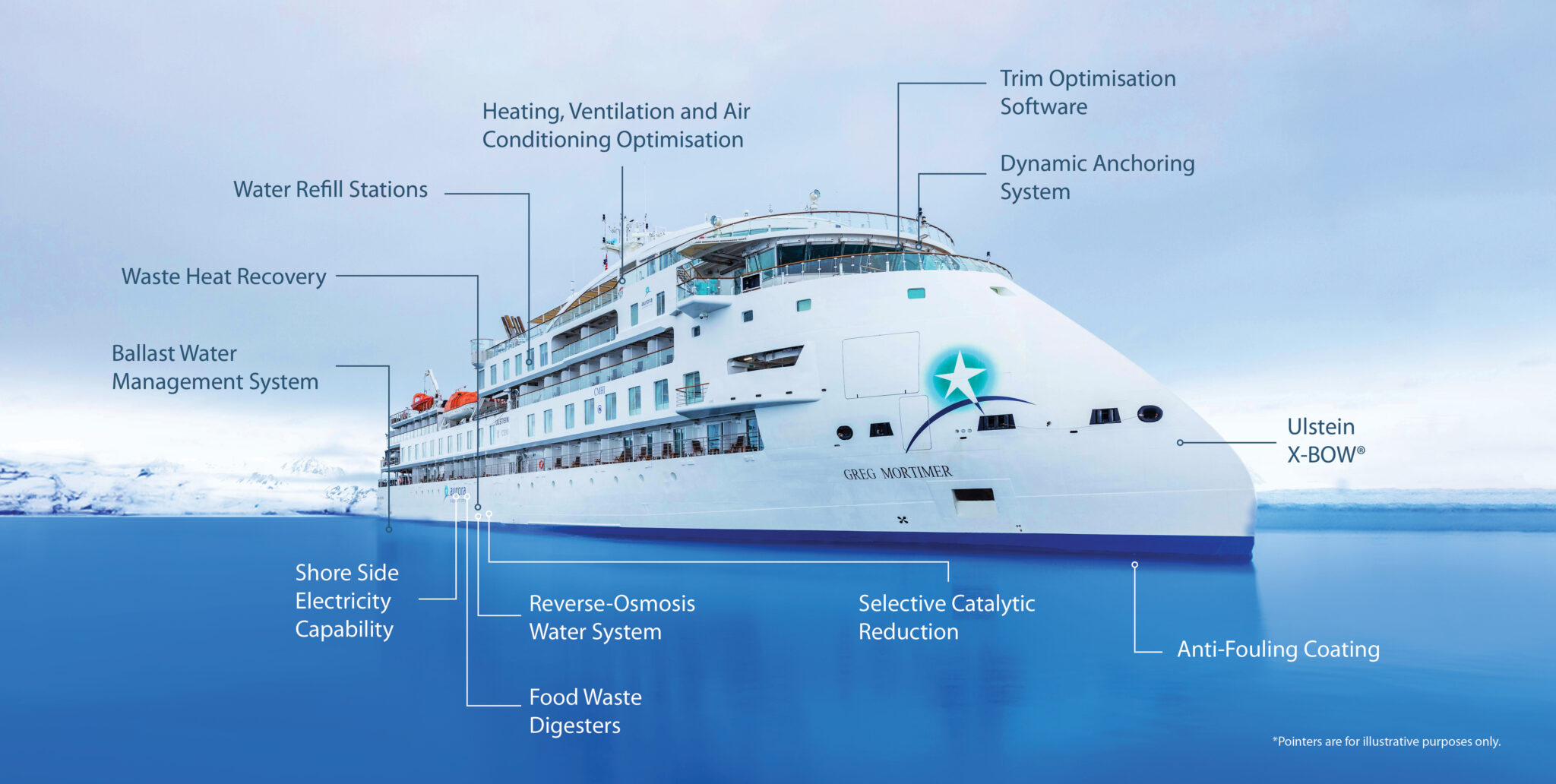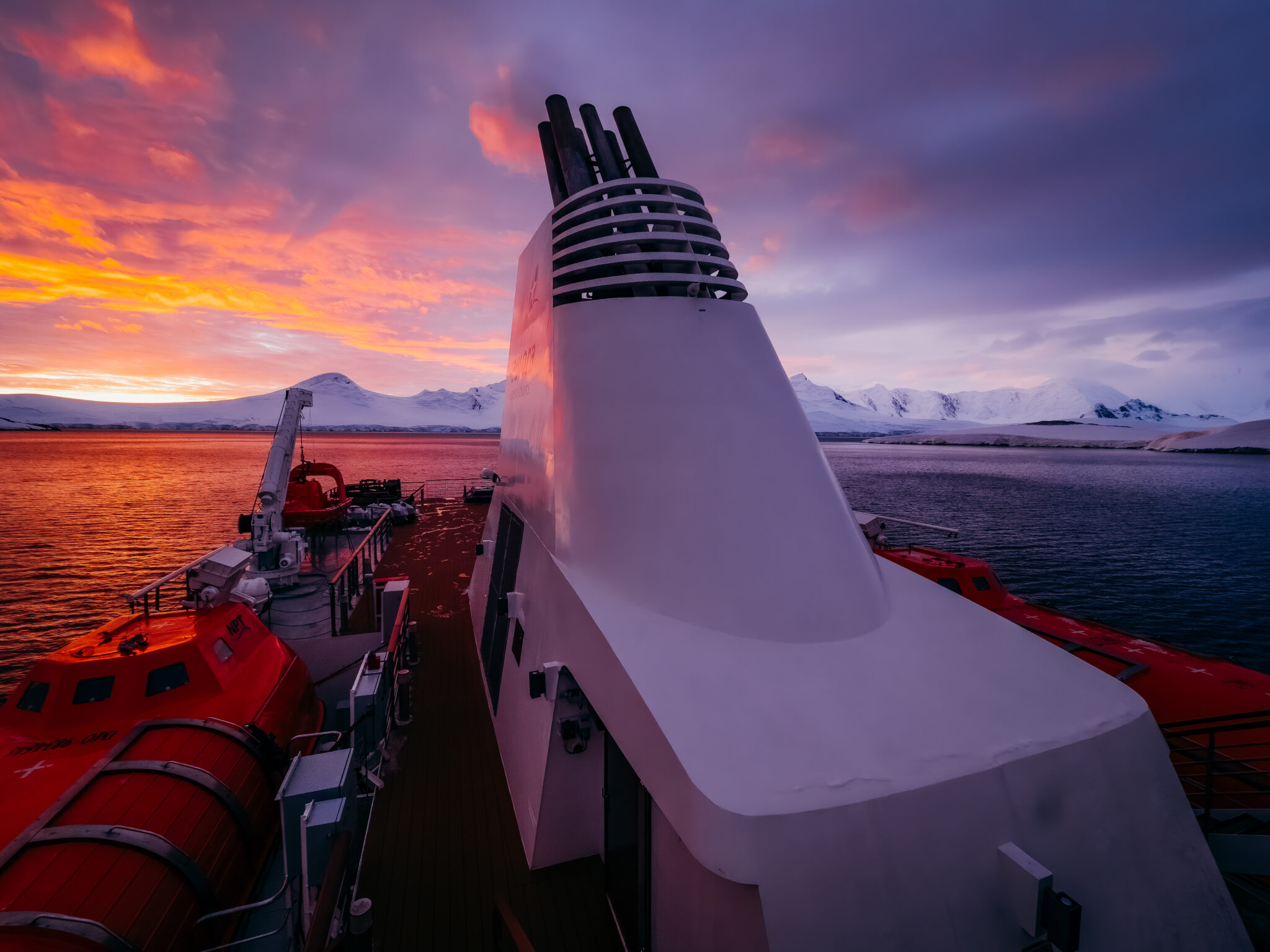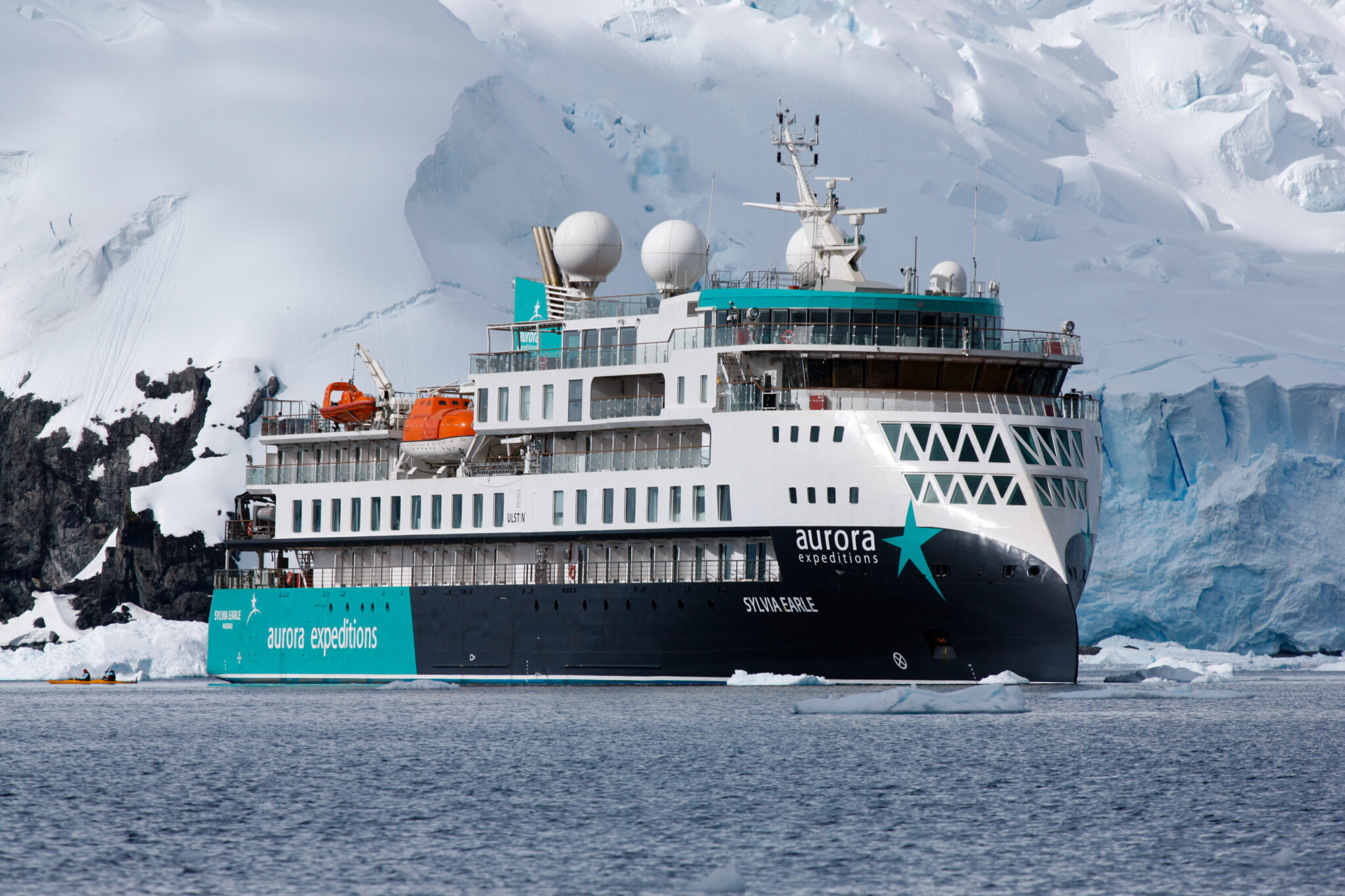The A-Z of Ship Sustainability Features
Home > Sustainability > The A-Z of Ship Sustainability Features
Over the last three years, we have transitioned to operating two new innovative and purpose-built ships, named after environmental champions – the Greg Mortimer and the Sylvia Earle – that feature more sustainable technologies and designs.

Image is of the Greg Mortimer, however sustainability features apply to both the Greg Mortimer & the Sylvia Earle
Anti-Fouling Coating
Anti-fouling paints are used to coat the bottom of ships to prevent sea-life, such as algae and molluscs, attaching themselves to the ships’ hull, which would slow down the ship and increase fuel consumption. While anti-fouling systems are important for fuel efficiency, it’s important to use antifouling paints that have the least adverse environmental impact. Anti-fouling coatings are mandatory for ships, and harmful organotins in ship fouling paints are prohibited.
Ballast Water Management System
Ballast water is ocean water taken on board to maintain stability and trim. The concern with ballast water is that it often contains a range of marine organisms which can carry from one region to another. Invasive aquatic species present a major threat to marine ecosystems, and ships are a major pathway for introducing species to new environments. The introduction of new species have, in many areas of the world, had devastating impacts, with the rate of bio-invasions continuing to increase at an alarming rate. Ballast water management systems aim to prevent the spread of harmful aquatic organisms from one region to another through proper treatment before water is discharged. It is mandatory for all ships to have ballast water management systems in place.
Dynamic Anchoring System
Dynamic anchoring systems allow ships to remain in a set position without a physical anchor, minimising harm to delicate seabeds. However, utilising this system means that the main engine remains in full operation, emitting more greenhouse gases than the smaller engine which operates when a physical anchor is used. Our team balances this trade-off, by using dynamic anchoring in shallow, fragile areas and dropping a physical anchor in sandy or rocky regions to reduce greenhouse gas emissions.
Food Waste Digesters
Also known as biodigesters, food waste digesters turn food waste into water through anaerobic digestion. We collect leftover food scraps, peels and other organic waste, then inside the biodigester, organic waste undergoes anaerobic digestion. In anaerobic digestion, microorganisms break down organic matter in the absence of oxygen.

Heating, Ventilation and Air Conditioning Systems Optimisation
Heating, ventilation and air conditioning (HVAC) systems play a crucial role in maintaining indoor comfort and air quality. Optimisation focuses on enhancing energy efficiency through advanced technologies, such as variable speed drives, energy-efficient motors and smart controls. Smart controls and automation allow for precise monitoring and adjustment of temperature, humidity and air quality. This ensures energy is only used when and where it is needed, preventing unnecessary consumption during low demand periods.
Reverse Osmosis Water System
Reverse osmosis water systems desalinate seawater, providing an ongoing source of fresh water. By decreasing reliance on freshwater at ports, this system contributes to better water conservation and ensures a more self-sufficient water supply.
Selective Catalytic Reduction
The selective catalytic reduction process involves mixing the engines exhaust gas with a reducing agent in the presence of a catalyst to break down harmful nitrogen oxide (NOx) emissions into safe compounds. The result is a significant reduction in NOx emissions, which is an indirect greenhouse gas emission that poses significant environmental and health concerns. This system contributes to better air quality and a healthier environment.
Shore Side Electricity Capability
Our vessels are equipped with technology that enables them to utilise shore-based power while in port. When using shore-based electricity, fuel consumption is significantly reduced and greater opportunities arise in regions where renewable energy is harnessed through the grid. The challenge remains that many remote location ports we visit need to be equipped with the necessary technology to support this type of connectivity. We advocate for the implementation of these technologies, and we hope to see more opportunities to utilise this system in the destinations we visit.
Trim Optimisation Software
Trim refers to the balance of the ship and the distribution of weight along the length of the vessel. Trim optimisation software adjusts the ships balance and trim to improve fuel efficiency. It optimises the distribution of weight on board, reducing fuel consumption.

Ulstein X-BOW®
The inverted bow splits waves with more stability, so the vessel can better maintain its speed and absorb the waves force more evenly across its surface. By enabling ships to reduce impact, slamming and wave induced vibrations, the X-Bow supports vessels to achieve better energy efficiency, lower speed loss and acceleration levels, ultimately improving fuel efficiency and reducing atmospheric emissions.
Waste Heat Recovery
Waste heat recovery systems capture and repurpose excess heat generated by a ships engine to provide heating to staterooms and warming onboard water tanks. Due to its efficiency, most new ships have this system in place.
Water Refill Station
Our water refill stations enable passengers and our staff to use their AE Expeditions refillable aluminium bottles throughout our expeditions and once returning home, eliminating any need for single-use plastic bottles.

